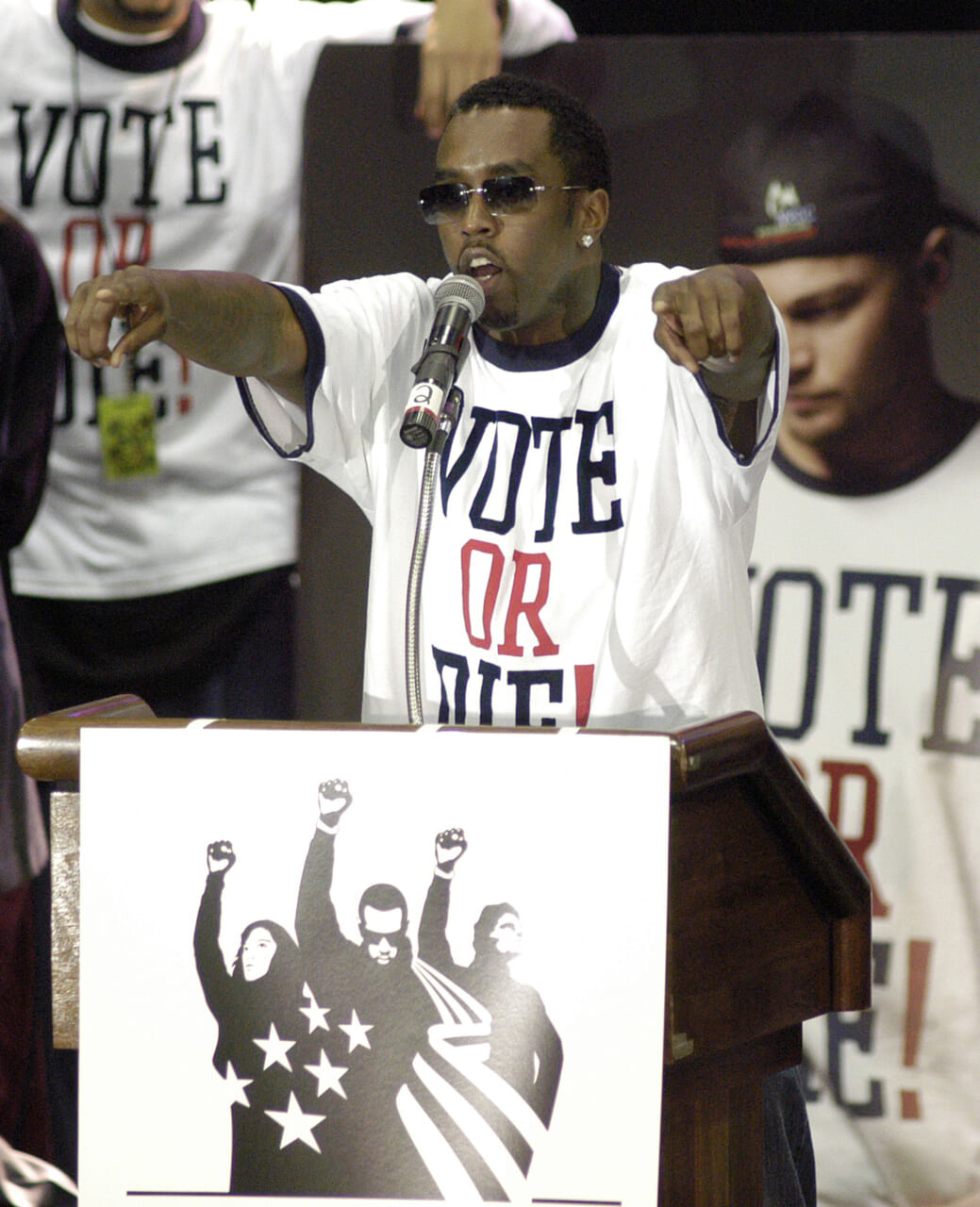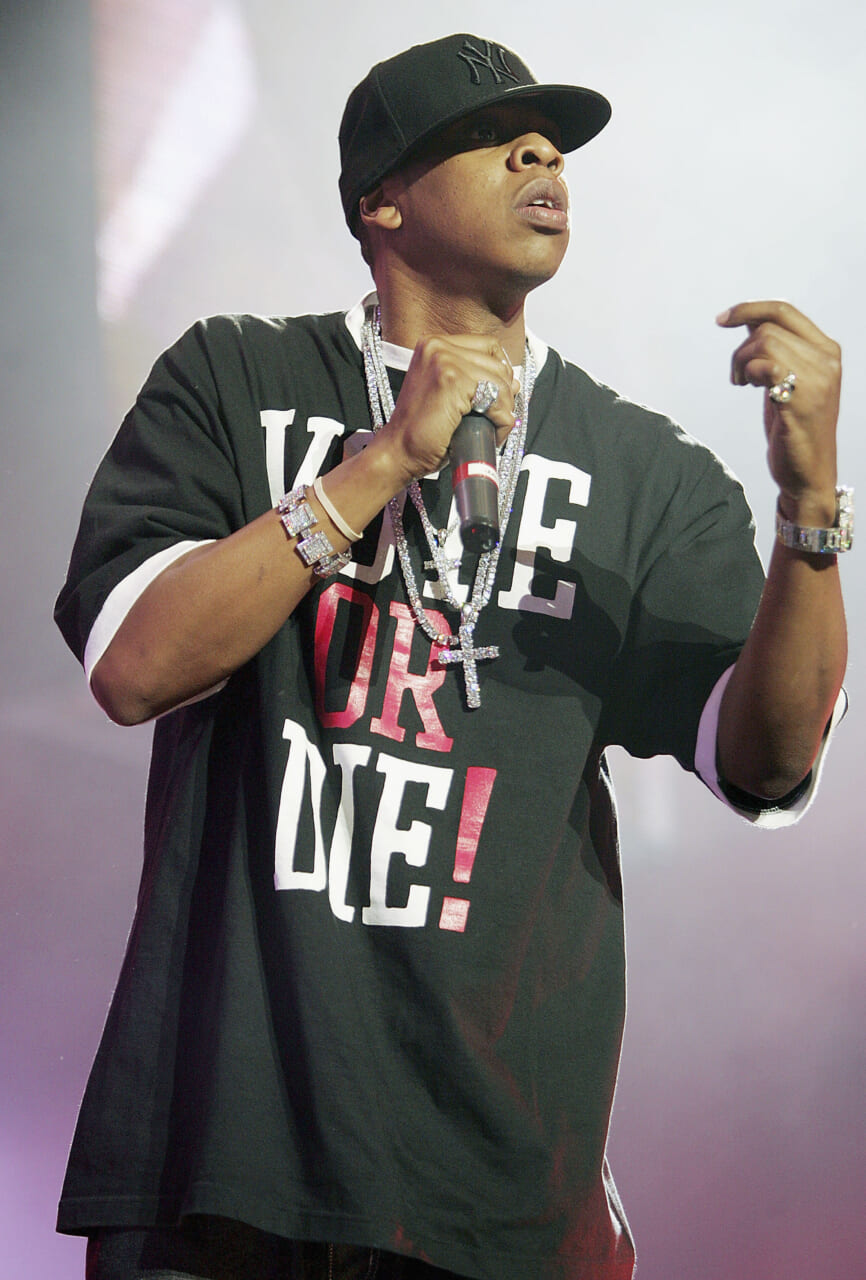Revolt’s new Vote or Die! campaign is not exactly like its predecessor
This is not your mother's Vote or Die! campaign.
It was the year 2004 and Sean “P. Diddy” Combs was touring the country in a T-shirt with the words Vote or Die! across the front, encouraging young people to vote in the presidential election. It was the campaign heard around the world. Diddy was conducting interviews on a private jet and celebrities like Mary J. Blige were right beside him encouraging youth to vote. You couldn’t turn the TV on without news pundits bashing or loving the hip-hop-driven campaign or your favorite celebrity donning the shirt, pushing for your vote.
Read More: Kamala Harris encourages Black Americans to vote, support HBCUs at 2020 BET Hip Hop Awards
And it worked. In 2004, 51% of young people between the ages of 18-29 voted in the 2004 presidential election in comparison to the 42.3% that voted in 2000. But this new Vote or Die! campaign feels different, less bling bling, and more down to earth. There are no jets or large gatherings (that could also have something to do with the coronavirus). The shirts are back with a slight facelift and if you check the web, the coverage is there.
This time around Diddy’s media company, Revolt is spearheading the initiative. As of June 1, the company has redirected its focus from “zero social justice content to a 100% social justice content.” They have been conducting town halls and surveys to figure out what makes Gen Z and millennials tick as they push a redesigned voting initiative which will continue after the Presidential election.

“If we are going to truly mobilize this generation we are going to have to shift to a format that works for them,” Detavio Samuels, chief operating officer at Revolt, told theGrio.
He says the company is redesigning itself to fully serve the younger generation by feeding them information in the way they will enjoy it, short in form, and from folks who look like them. They are arming the youngest generations with knowledge and tools to understand that the fight for the next presidential election begins the day after Nov. 3 and that local elections are just as important.
But it wasn’t the election that sparked the change. It wasn’t an outrageous tweet from Donald Trump or an off-handed comment from Joe Biden. It was the brutal death of a Minneapolis man at the hands of a police officer that redirected Revolt as a network and revived one of the most popular campaigns in modern history. His name was George Floyd.
“Ultimately after George Floyd, Revolt made a major pivot to social justice,” says Samuels. “That fundamentally changed the DNA of Revolt to social justice and the flight for Black liberation is now embedded into who we are as a brand.”
He adds that voting is not a silver bullet in the fight for change but a key weapon in the arsenal along with economic empowerment, protesting, and activism.
The brand has done its research. They conducted a study and surveyed a thousand 18-34-year-olds across the country in order to learn how they feel about the election. They found 28% of young people are not voting because neither candidate represents their interests, both of them have sexual assault allegations looming or they are just too exhausted to vote.
“There is this gut to want to bash them [nonvoters] but we have never really as a culture dove into why they don’t vote,” says Lynzie Riebling, VP, insights & strategy at Revolt, who led the study. “Instead of just making assumptions that they are irresponsible or arrogant let’s take a moment and zoom in on some of those things.”
Another find is that 14% of young people cannot vote due to ‘high barriers.’ This group makes up those who cannot vote due to citizenship or who have mental restrictions.
Riebling explains that if you are deemed mentally incapacitated you lose your right to vote. That could include a young person who has slight autism or a learning disorder. “My big goal for the study is to help people have empathy for this generation,” she adds.
This Vote or Die! campaign feels different because it is. Samuels says the 2004 Vote or Die! was about making voting cool, but now it’s easy to say the mission is richer.

“We realize who we put in office at the national or local level has a say on abortion rights, gun control, police brutality, systemic racism and things that actually impact young folks’ survival and once we were clear on the mission and the purpose we knew we had to show up at the election.”
Read More: Ice Cube explains why he blew off Zoom call with Kamala Harris: ‘I want to get things done’
Samuels says despite the strategy upgrade there is one aspect of the campaign that they couldn’t change, the name.
“Vote or Die! has a sense of urgency and a push for survival, and it felt like there is no name that could compete with that.”
Have you subscribed to theGrio’s podcast “Dear Culture”? Download our newest episodes now!
TheGrio is now on Apple TV, Amazon Fire, and Roku. Download theGrio today!
More About:Politics

